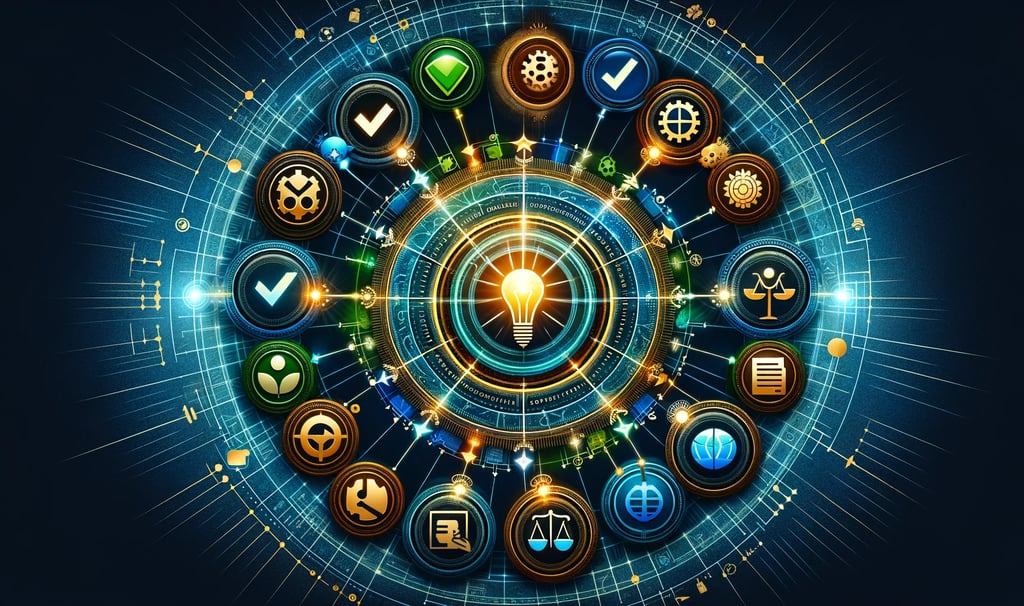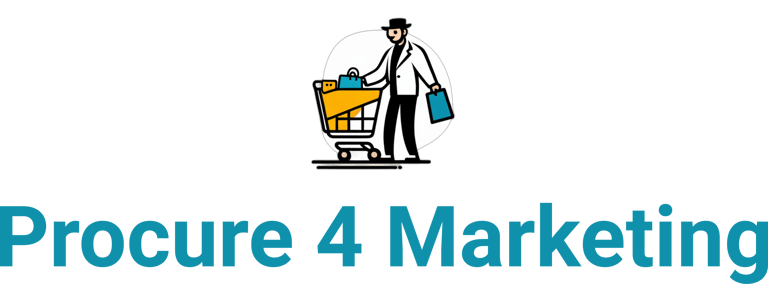Role of Suppliers in Supply Chains.
What is a supplier? This guide explains their critical role in the supply chain, the different types, and how companies select and manage them for success.
SUPPLY CHAIN
The Procure 4 Marketing Team
11/30/20233 min read


Quick Answer: What is a Supplier?
A supplier is any business that provides the raw materials, components, or services needed to create another company's product. They are the first and most critical link in any supply chain. A supplier's performance directly impacts the final product's quality, cost, and availability. Effectively managing suppliers—from selection and negotiation to relationship building—is essential for creating an efficient, resilient, and successful supply chain.
What is the Role of a Supplier in a Supply Chain?
Suppliers are the foundation of every product. Their reliability and the quality of their goods create a ripple effect throughout the entire supply chain.
Impact on Quality: The quality of the raw materials directly determines the quality of the final product. A subpar component can lead to product defects and damage a brand's reputation.
Example: For a luxury handbag brand, the quality of the leather sourced from a supplier directly determines the final product's look, feel, and durability.
Impact on Efficiency: Consistent, on-time delivery from suppliers is crucial for maintaining production schedules. A single delay can cause costly bottlenecks and manufacturing shutdowns.
Partners in Innovation: Great suppliers don't just provide materials; they can be valuable partners. They can offer insights into new technologies and processes that can improve product design and reduce costs.
What are the Different Types of Suppliers?
Supply chains rely on a diverse ecosystem of suppliers, including:
Raw Material Suppliers: They are at the very beginning of the chain, providing basic materials like iron ore for steel, cotton for clothing, or wheat for bread.
Component Suppliers: They provide specific, pre-made parts for assembly. An auto manufacturer, for example, relies on hundreds of component suppliers for everything from engines to microchips.
Wholesalers/Distributors: They buy finished products in bulk from manufacturers and distribute them to retailers.
Service Providers: These suppliers provide essential services like logistics and transportation (e.g., FedEx, Maersk), warehousing, or the IT software that helps manage the supply chain.
How Do Companies Choose the Right Suppliers? (The Selection Process)
Choosing the right supplier is a critical strategic decision. The process typically follows these steps:
Identify Needs: Clearly define the specifications, quantity, and quality required.
Solicit Bids: Send out a Request for Proposal (RFP) to potential suppliers.
Evaluate Proposals: Evaluate suppliers based on key criteria, not just price. This includes:
Total Cost: Includes price, logistics, and potential risks.
Quality: Does the supplier have the right certifications and quality control processes?
Reliability: What is their track record for on-time delivery?
Ethical Practices: Do they adhere to fair labor and environmental standards?
Negotiate and Contract: Once a supplier is selected, negotiate the final terms, pricing, and delivery schedules into a formal contract.
Why is Building a Strong Supplier Relationship Important?
Viewing suppliers as long-term partners rather than just vendors is a key competitive advantage.
Greater Reliability: Suppliers are more likely to prioritize your needs during emergencies or supply shortages.
Collaborative Innovation: A trusted supplier is more willing to share innovative ideas or co-invest in new technologies with you.
Increased Flexibility: A strong relationship makes it easier to manage unexpected changes in demand or production schedules.
What is Supplier Relationship Management (SRM)?
SRM is the systematic approach to managing the ongoing relationship with suppliers. It involves:
Performance Monitoring: Using Key Performance Indicators (KPIs) to track supplier performance on metrics like on-time delivery, quality defect rates, and cost.
Risk Management: Mitigating risks by diversifying the supplier base (not relying on a single source) and having contingency plans in place for potential disruptions.
Technology Integration: Using software to improve efficiency and communication. For example, an ERP system can automatically send a new purchase order to a supplier when inventory runs low, while blockchain can be used to provide a transparent and traceable record of a product's origin.
Frequently Asked Questions (FAQ)
Q1: What is the difference between a supplier and a vendor?
The terms are often used interchangeably. However, a "vendor" typically implies a more transactional, one-time purchase relationship. A "supplier" usually refers to a more strategic, long-term partner who provides critical components or materials on an ongoing basis.
Q2: What is "single-sourcing" vs. "multi-sourcing"?
Single-sourcing is relying on only one supplier for a particular item. It can lead to a strong partnership and volume discounts but is very risky if that supplier has a problem. Multi-sourcing is using several suppliers for the same item. It reduces risk but can be more complex to manage.
Q3: What is a "supplier scorecard"?
A supplier scorecard is a tool used in SRM to evaluate and rank suppliers based on a set of key performance indicators (KPIs). It provides a clear, data-driven way to assess which suppliers are performing well and which need improvement.

